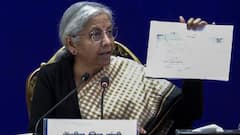Global Gender Gap 2024: India Slips 2 Ranks On WEF Index; Global Gender Parity Still 134 Years Away, Says Report
Global Gender Gap 2024: World Economic Forum's report ranks Iceland highest in gender equality. India ranks 129th, slipping two positions since 2023.

Global Gender Gap 2024 Report: The World Economic Forum's latest report on the Global Gender Gap highlights significant strides towards gender parity, while underscoring the persistent challenges that continue to hinder full equality. The 2024 Global Gender Gap Report, released on June 12, reveals nuanced insights into the progress made globally and the areas requiring urgent attention.
The report shows a slight improvement in the overall gender gap, closing 0.7% since last year. As of 2024, the global gender gap stands at 68.5% across all 146 countries indexed this year, meaning it will take 134 years — by 2158 — to achieve full parity if the current rate of progress is maintained.
The progress towards reaching gender parity has been “very little”, compared to last year, the report notes after measuring all four dimensions — economic opportunities, health, education, and political leadership.
The top 10 most gender-equal nations are found to be in Europe, with Iceland retaining its top position with a score of 0.935. The rest are Finland (0.875), Norway (0.875), New Zealand (0.835), Sweden (0.816), Nicaragua (0.811), Germany (0.810), Namibia (0.805), Ireland (0.802), and Spain (0.797).
With a score of 0.641, India stands at the 129th position, slipping 2 ranks since 2023 on the index that places Bangladesh at the 99th position, Nepal at 117th, Sri Lanka at 122nd, and Bhutan (0.651) at 124th among the immediate neighbours.
Pakistan (0.570) is at the 145th position, one rank above Sudan (0.568), a new entry on the index.
How The World Fared On 4 Dimensions Of Gender Parity
Of the four gender gap areas measured across the 146 countries, Health and Survival has performed the best with 96% gap closed, though some regions still exhibit disparities in life expectancy and access to healthcare services, primarily due to cultural and economic factors.
Encouragingly, Educational Attainment has seen substantial progress closing 94.9% gap.
Many countries have achieved near-equality in education, particularly at the primary and secondary levels. However, the gap widens at the tertiary level, where women are underrepresented in STEM fields, limiting their future opportunities in high-demand, high-paying careers.
Economic participation remains one of the most challenging areas, with 60.5% of the gender gap closed. Women the world over continue to face significant barriers in entering and advancing in the workforce, particularly in leadership roles and high-growth sectors like technology and engineering.
The wage gap also persists, influenced by factors such as unpaid care work, which disproportionately falls on women, and a lack of representation in high-paying industries.
Political empowerment remains the area with the largest gender gap, with only 22.5% closed. Women continue to be significantly underrepresented in political leadership positions.
The WEF Gender Gap Report 2024, however, notes that the Political Empowerment gap has shown the most improvement over the 18 editions, and that the share of women in parliamentary positions has shown “an almost uninterrupted positive trajectory” since 2006.
ALSO READ ON ABP LIVE | Modi 3.0: Unemployment To Inflation. Key Economic Challenges Before The Finance Minister
India Slips In Global Gender Gap Rankings Amid Minor Setbacks
India, with its vast population of over 1.4 billion, has seen a slight decline in its efforts to close the gender gap in 2024, according to the World Economic Forum's latest Global Gender Gap Report. The country now ranks 129th out of the 146 countries, having closed 64.1% of its gender gap, which is a minor decrease from the previous year, placing it two ranks lower.
The regression in India's ranking is largely attributed to declines in educational attainment and political empowerment. Educational attainment, while progressing, has seen a reduction in parity levels. Although there are high enrollment rates for women in primary, secondary, and tertiary education, the increase has been modest. The literacy gap between men and women remains significant at 17.2 percentage points, placing India 124th on this indicator.
Despite the overall decline, the WEF report notes, India's economic parity score has shown a consistent upward trend over the past four years. The country has made small gains in economic participation and opportunity, but still falls short by 6.2 percentage points compared to its 2012 score of 46%. Key areas requiring improvement include closing gender gaps in estimated earned income, legislative roles, senior management positions, labor force participation, and professional and technical jobs.
In political empowerment, India's performance is mixed. While it ranks in the top 10 globally for the head-of-state indicator with a 40.7% score, representation at the federal level remains low. Women hold only 6.9% of ministerial positions and 17.2% of parliamentary seats, indicating a need for more robust measures to enhance female political participation.
Global Gender Gap Index Ranking In Southern Asia
1. Bangladesh
2. Nepal
3. Sri Lanka
4. Bhutan
5. India
6. Maldives
7. Pakistan
Trending News
Top Headlines










































